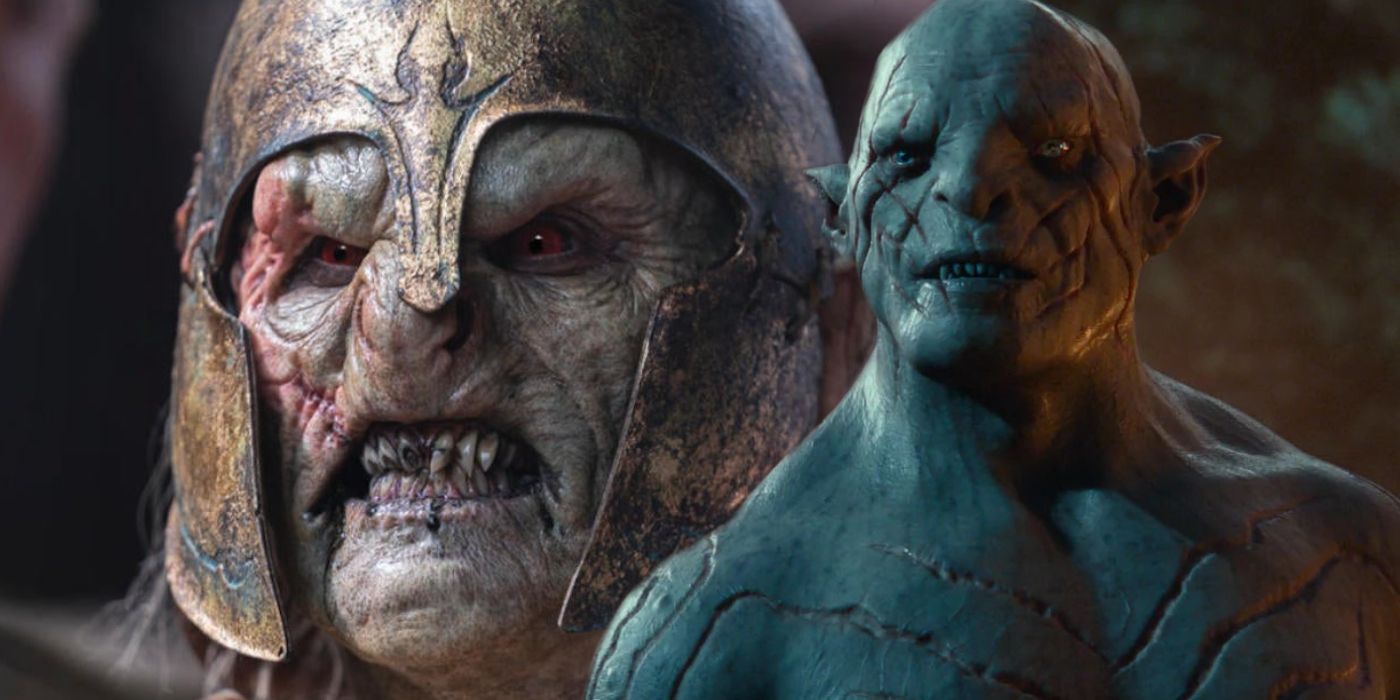
Thankfully, Amazon has taken the series in a direction that has avoided one of the mistakes of The Hobbit trilogy. The Hobbit films were released between 2012 and 2014 as a prequel series to The Lord of the Rings. The Rings of Power is again a prequel to both trilogies and will feature a lot of familiar creatures and locations from both series’.
The main mistake that the orcs of The Rings of Power seem to have avoided is in their practicality. The Lord of the Rings trilogy featured a great many orcs, most of which were made using prosthetic makeup as opposed to CGI. However, when The Hobbit was released, many were disappointed at the main villains of the film Azog the Defiler and Bolg, two orcs, being completely CGI creations. With The Rings of Power though, this issue seems to have been rectified. In opting for practical orcs through prosthetics, the creatures will feel similar to The Lord of the Rings’ orcs, feeling much more tangible within the world and increasing the immersion of the audience. The central upside of this is that prosthetics simply look better than CGI orcs. Given the ever-improving skills of prosthetic workers since the 2000s and The Lord of the Rings, The Rings of Power’s orcs look amazing, whereas CGI often inevitably comes across as dated.

The issue with a lot of The Hobbit’s creatures was how they impacted the film series’ narrative and emotional stakes. In being complete CGI creations, despite always looking great, often the stakes of the film were lowered due to their obvious intangibility with other actors. The nature of the CGI orcs, especially in The Hobbit: The Battle of the Five Armies, made them feel weightless. As they weren’t tangible people in prosthetic suits like a lot of The Lord of the Rings, the orcs seemed to float around the screen, making the action feel cheap and ineffectual.
With The Rings of Power‘s return to prosthetics, it seems these mistakes have been avoided. Given the obvious practical nature of the orcs, the Amazon series seems to be opting for physical creatures that will avoid the pitfalls of The Hobbit and its CGI creations. Having practical orcs not only simply looks better onscreen but allows for the emotional and narrative stakes of The Lord of the Rings: The Rings of Power to be better conveyed, avoiding one of the most-maligned mistakes of The Hobbit trilogy.




